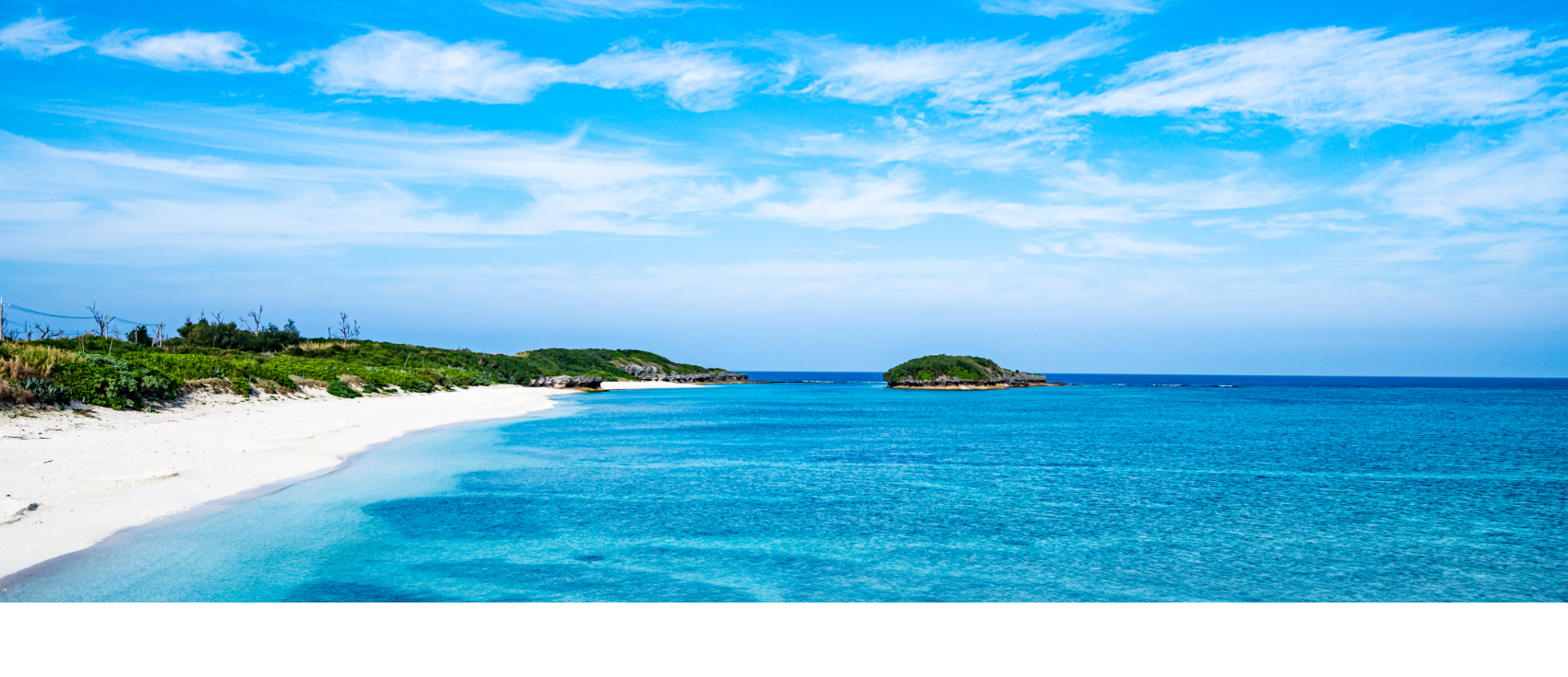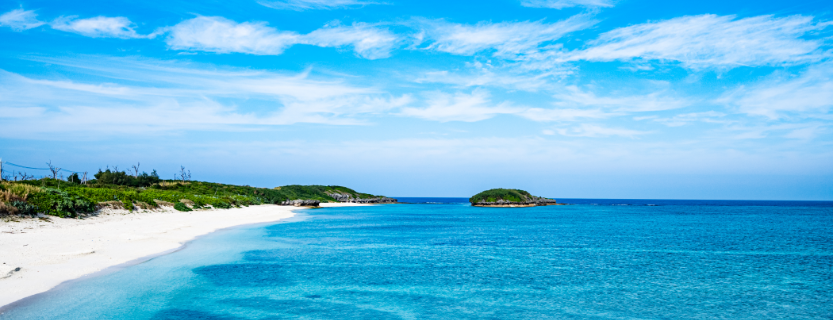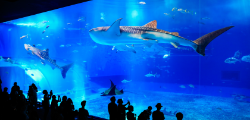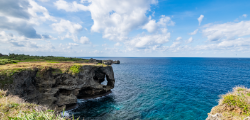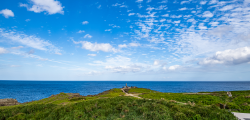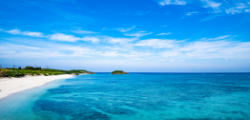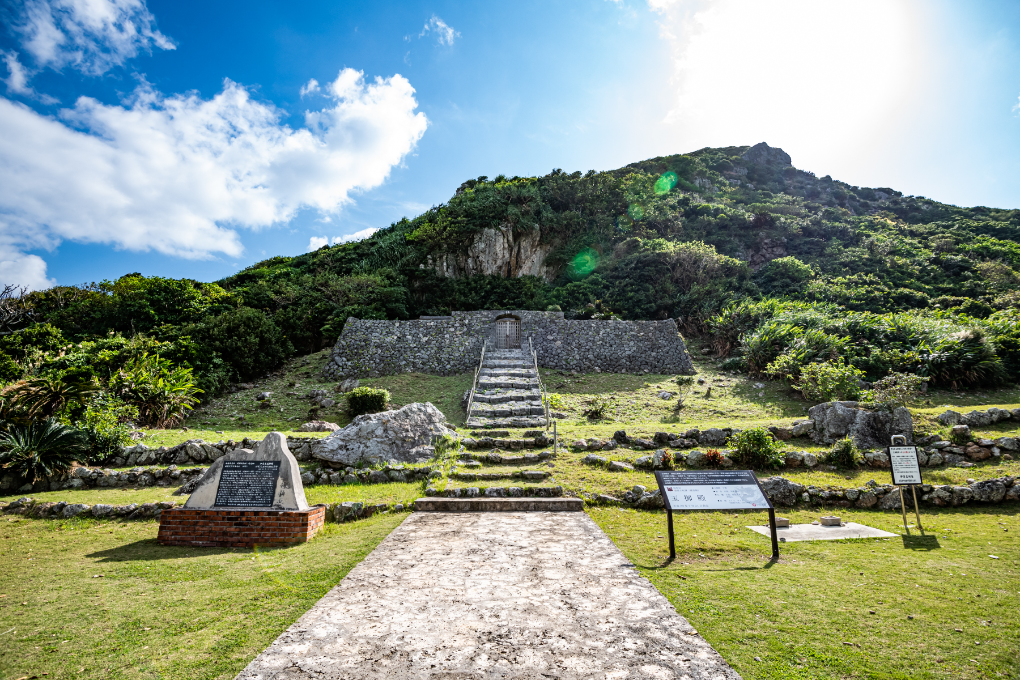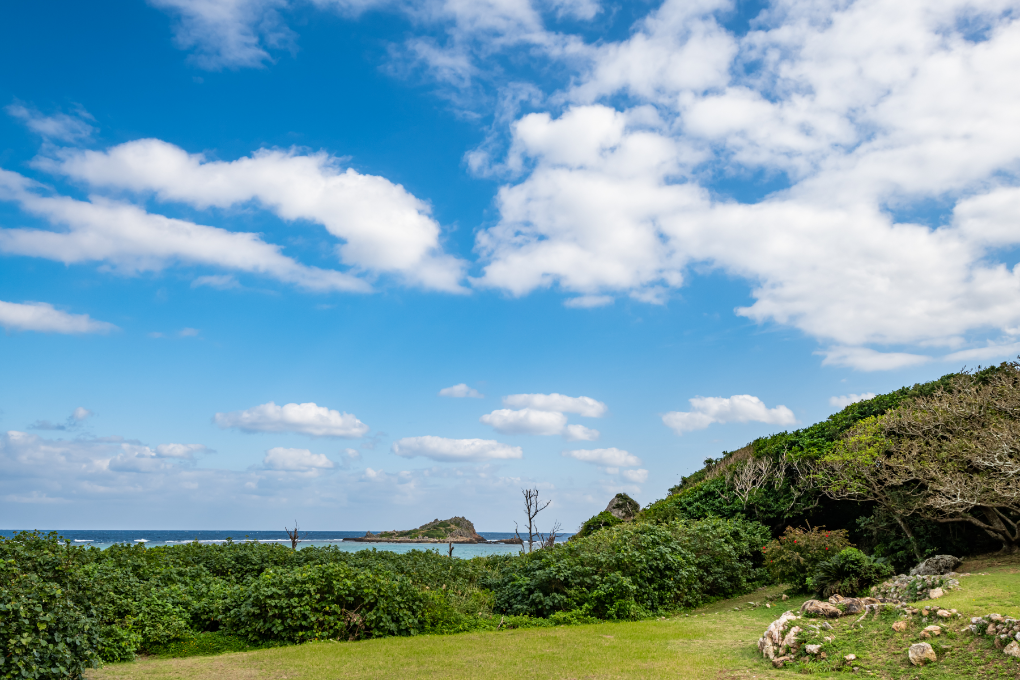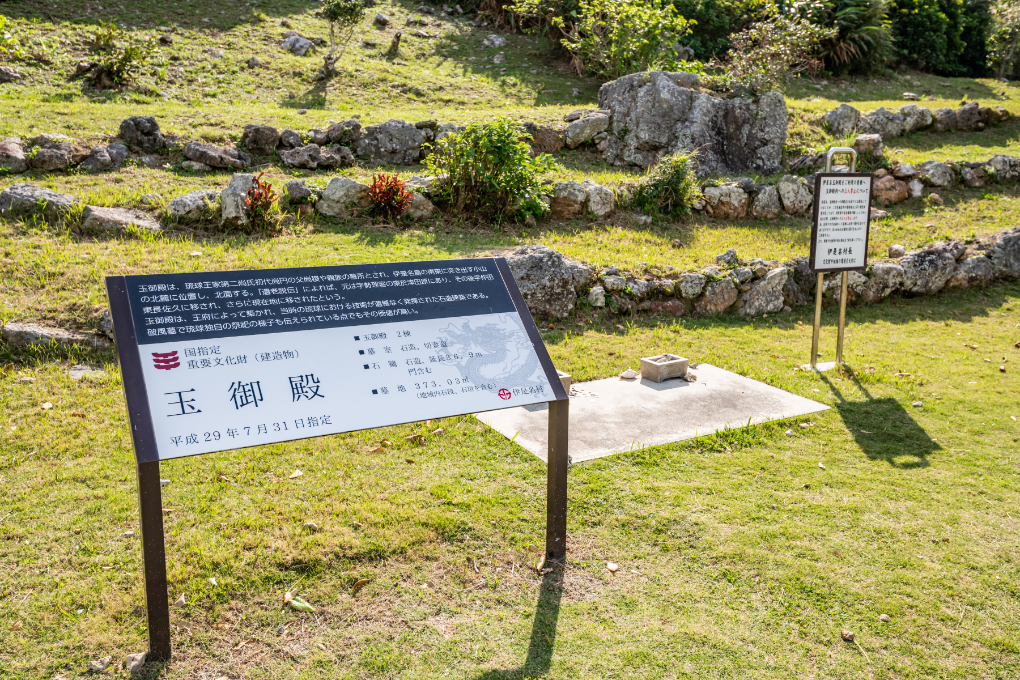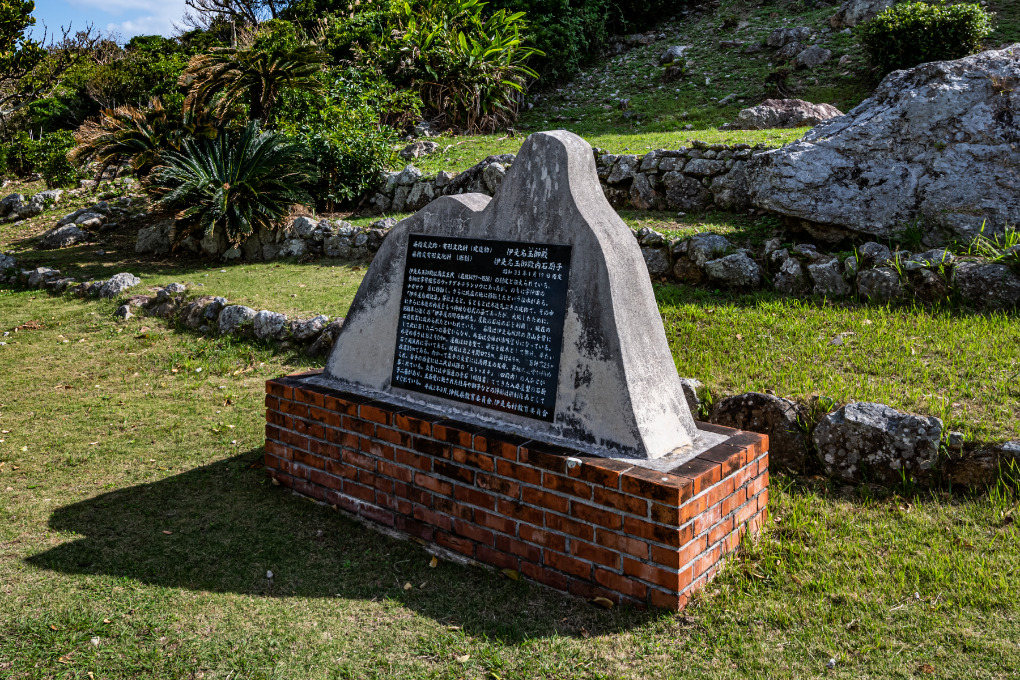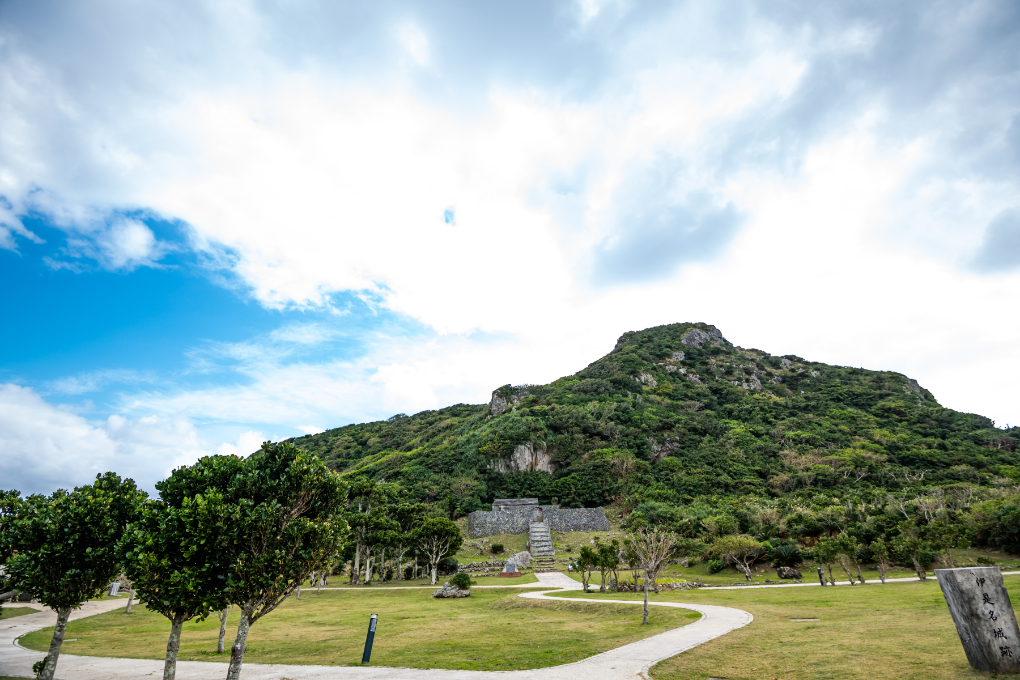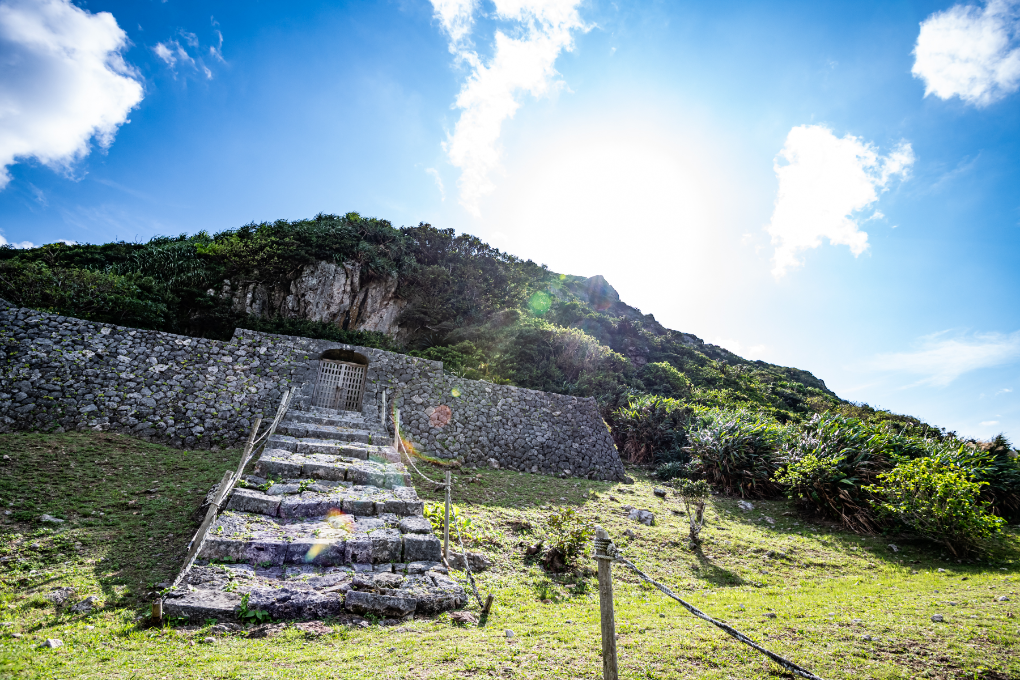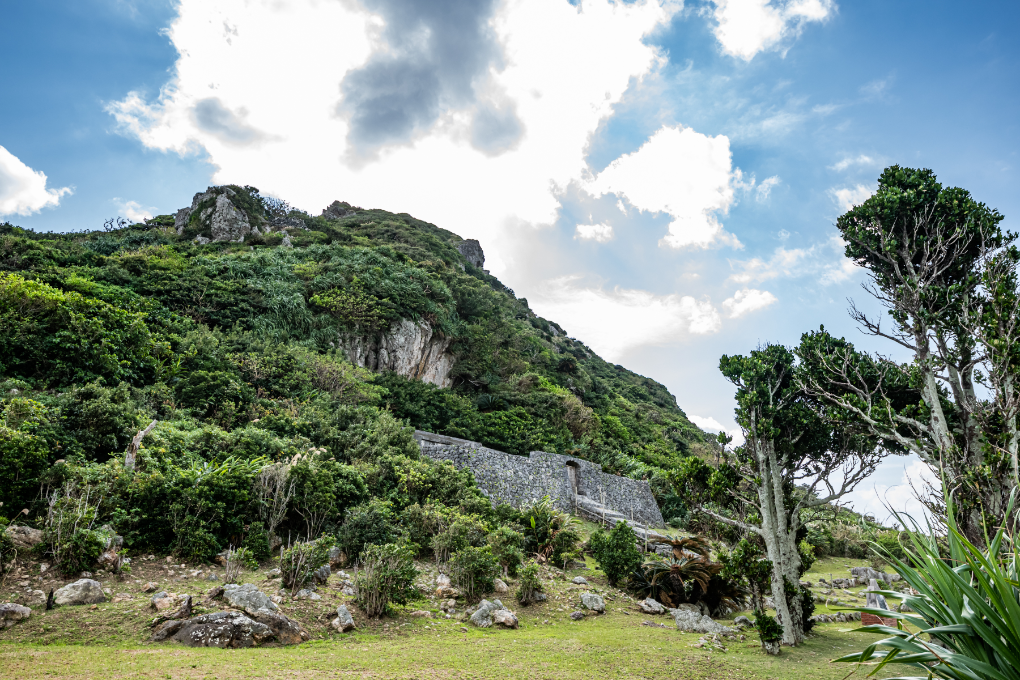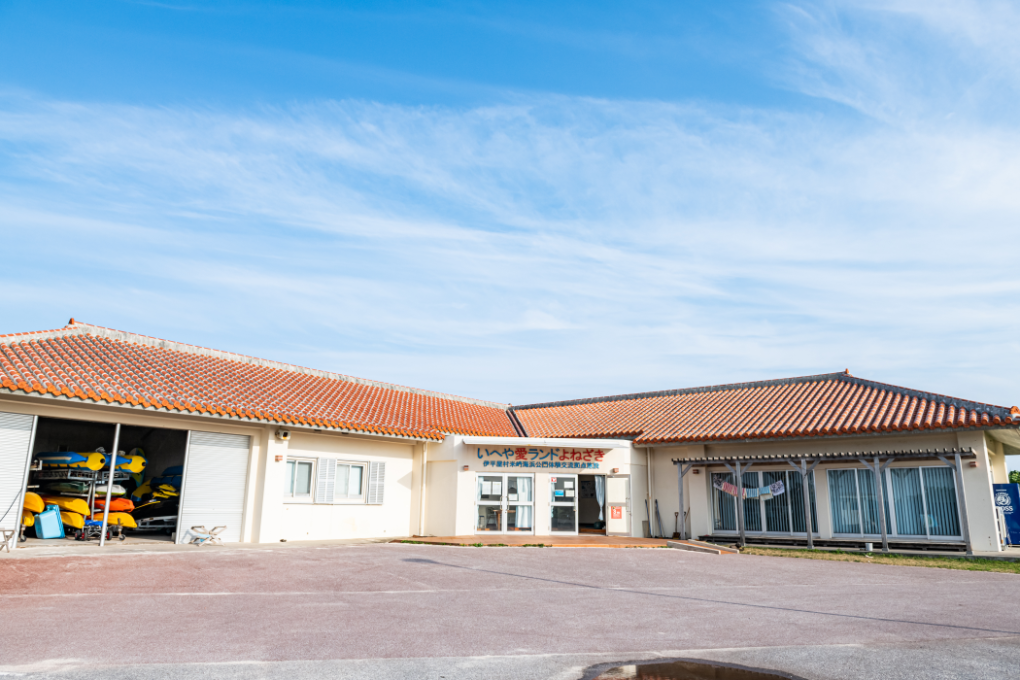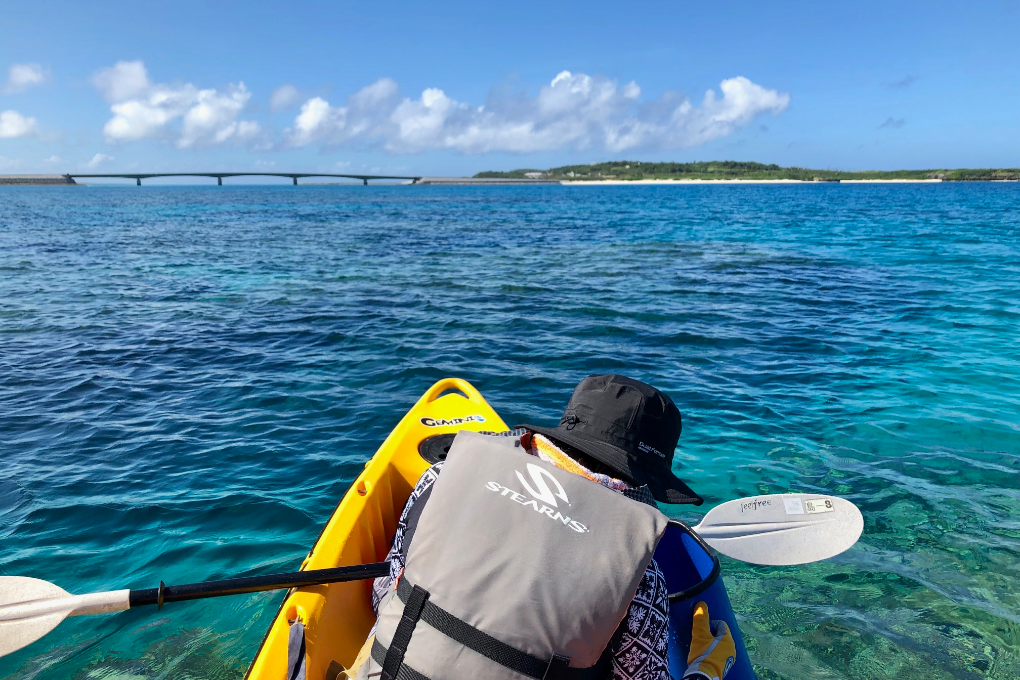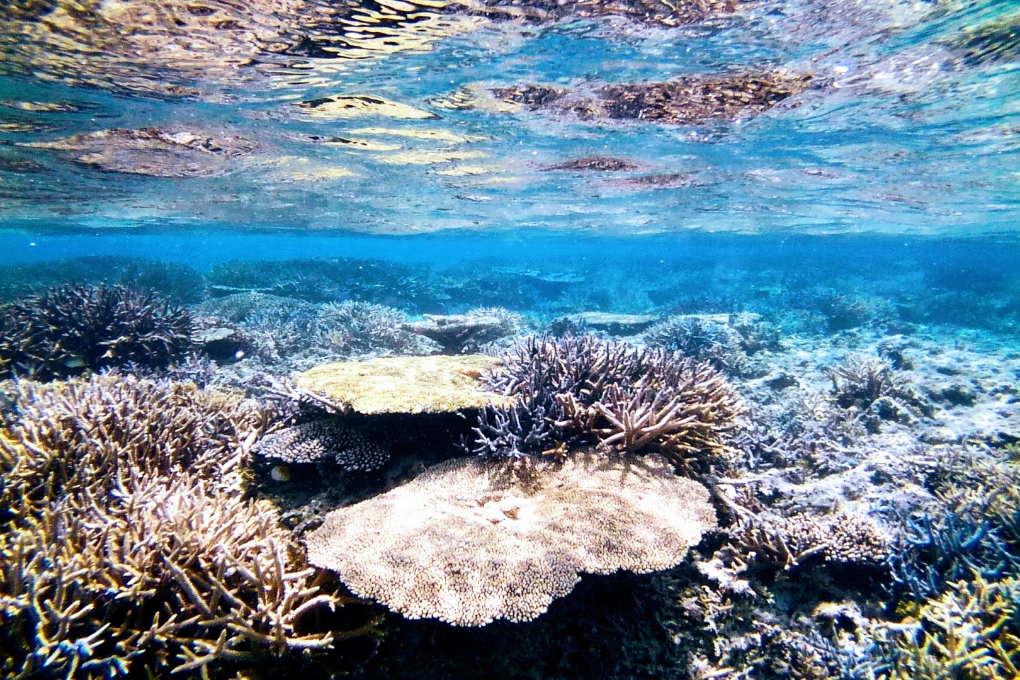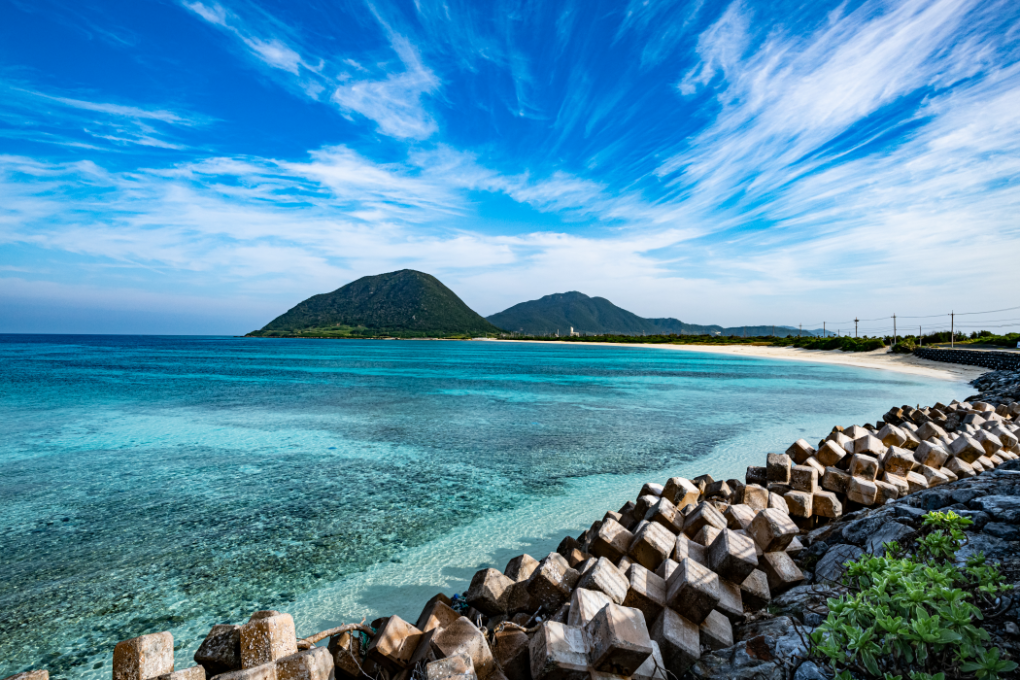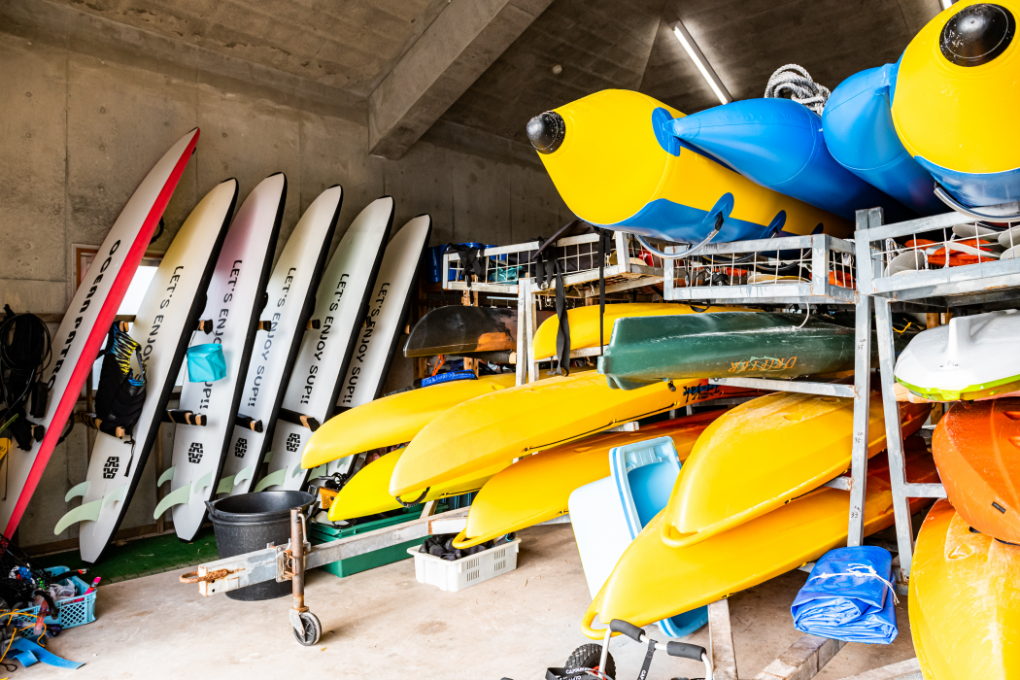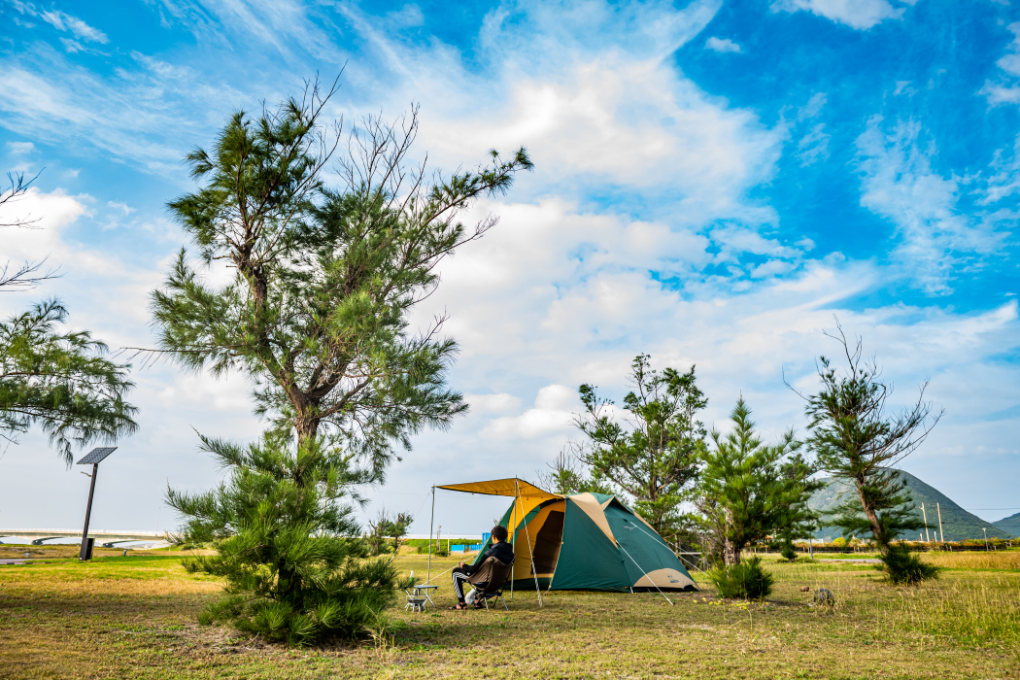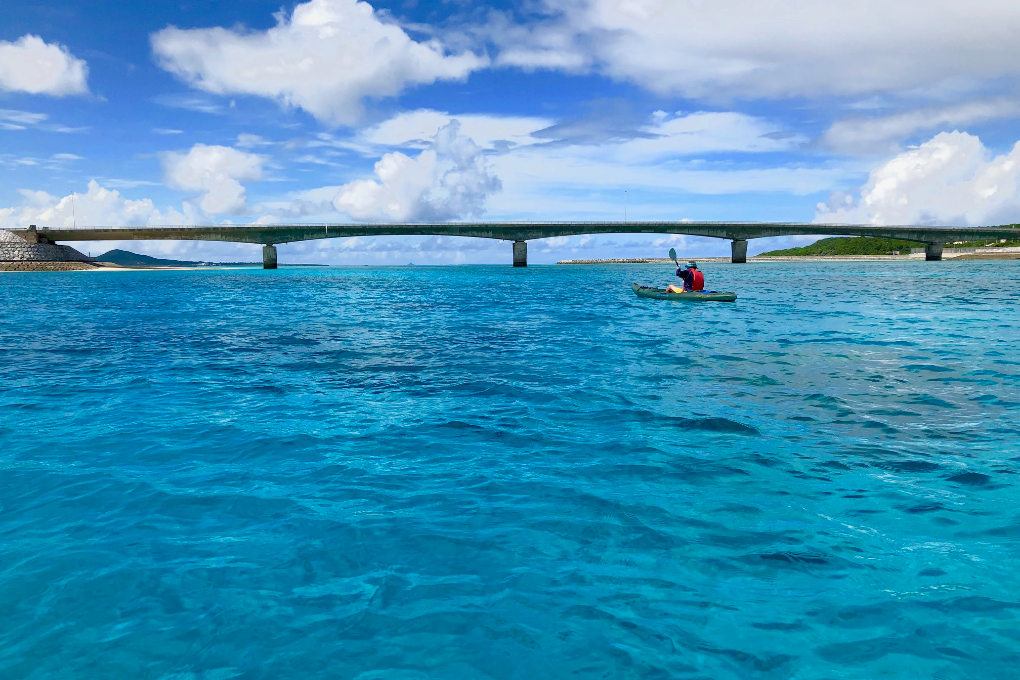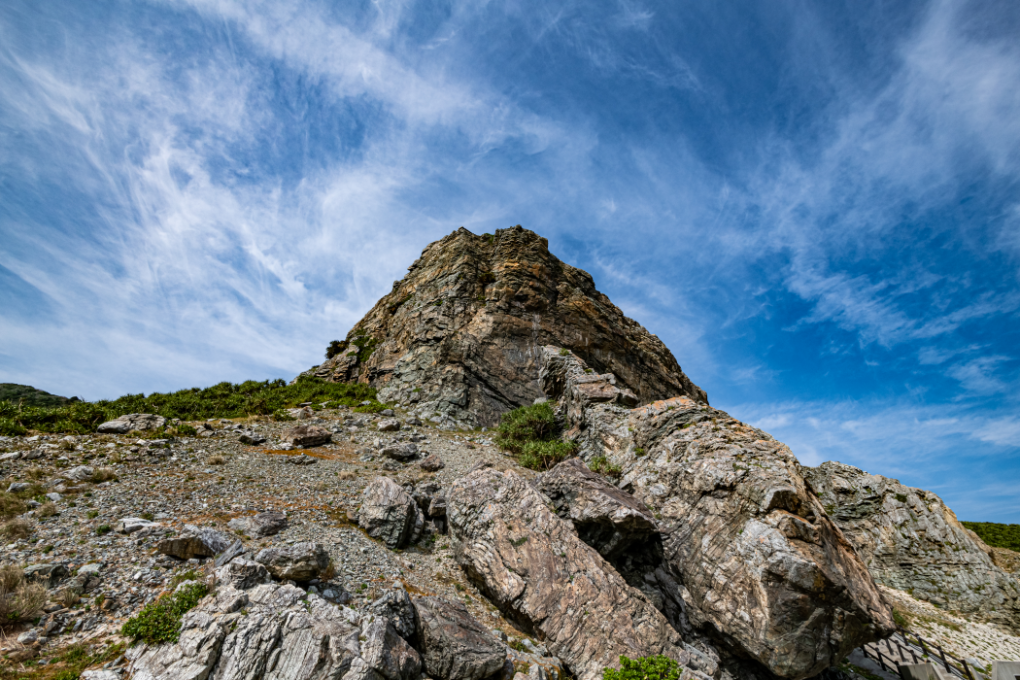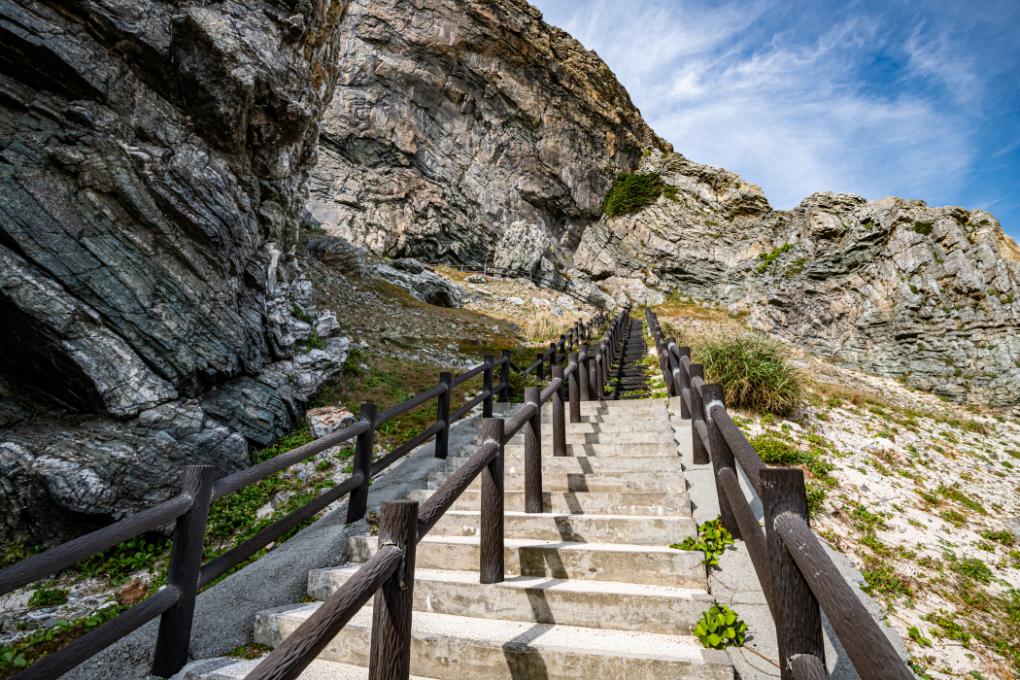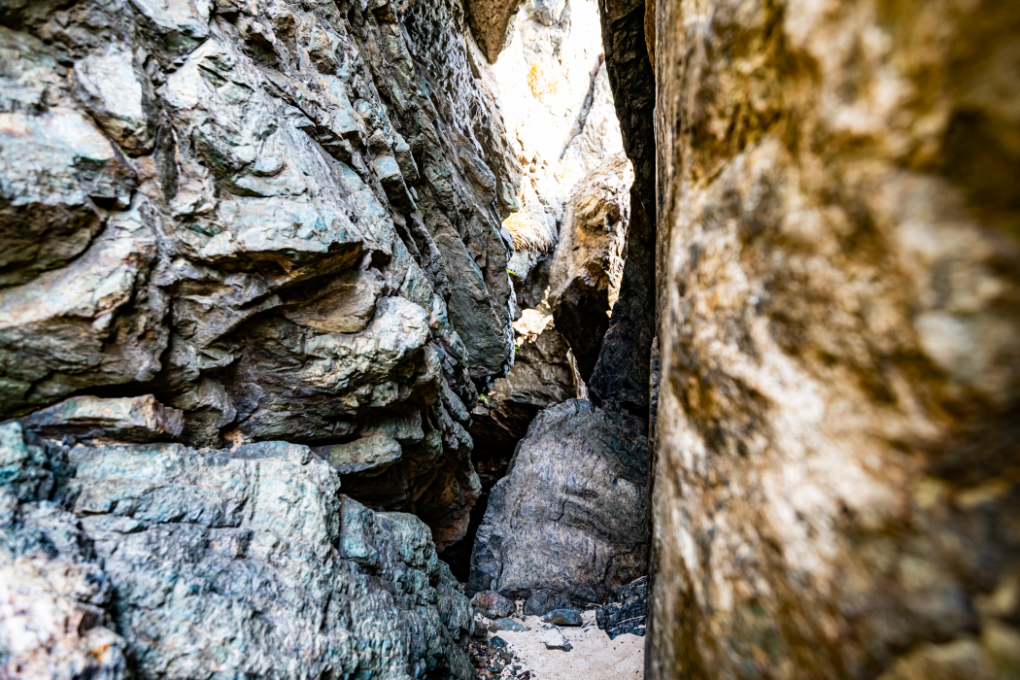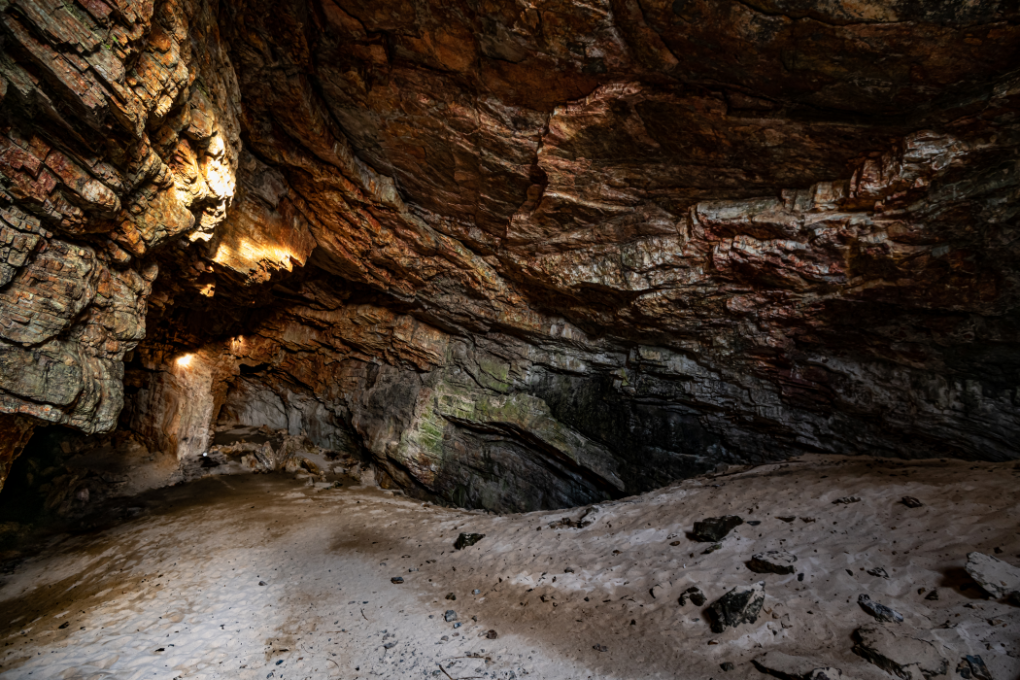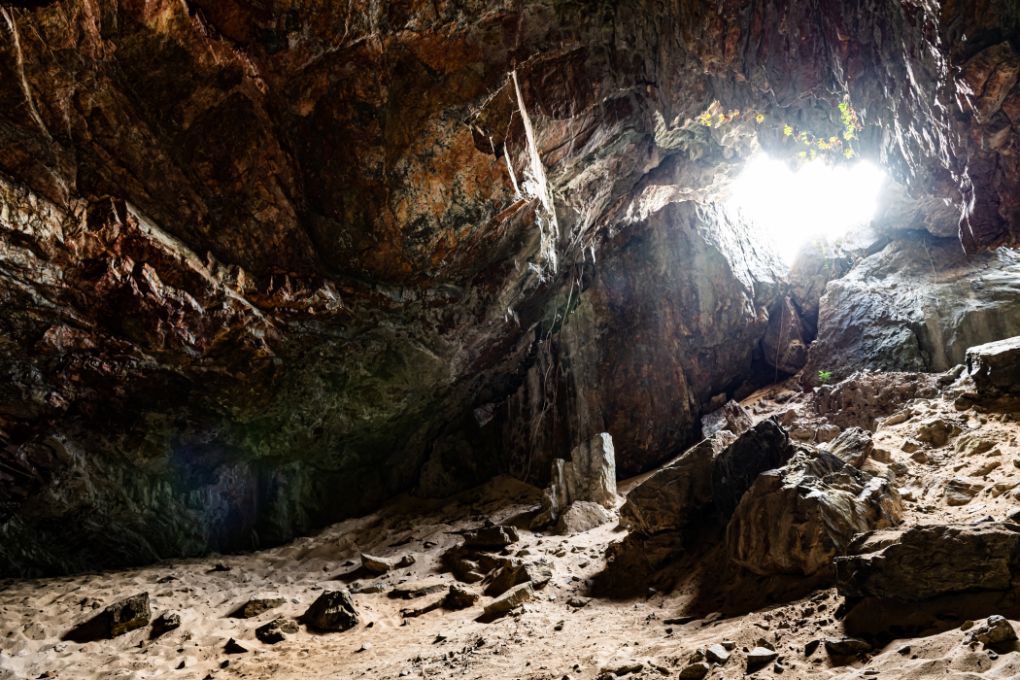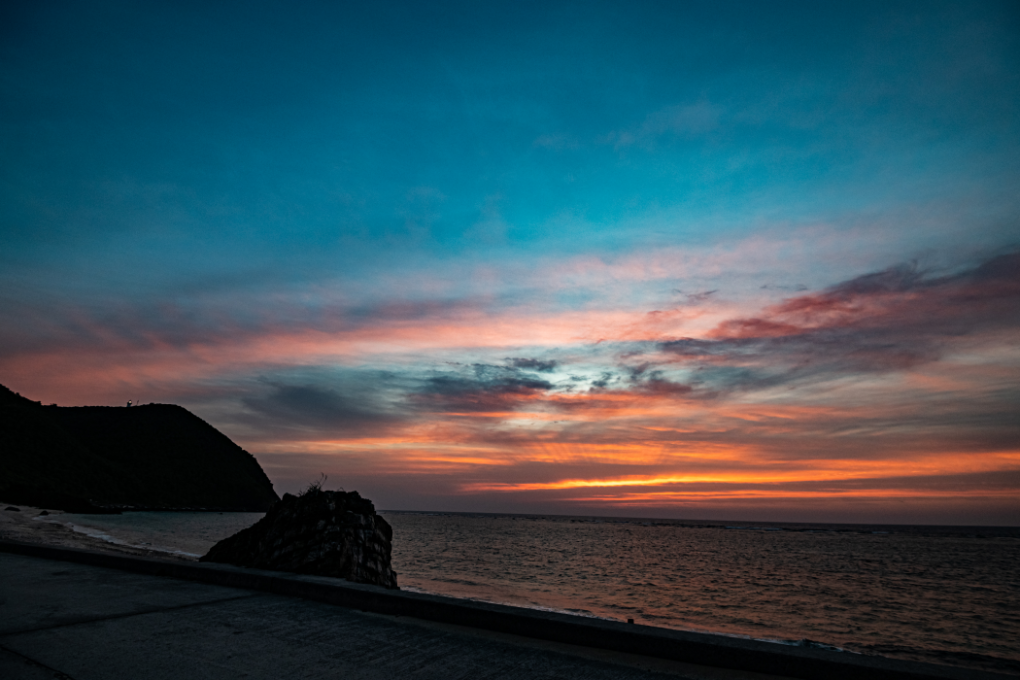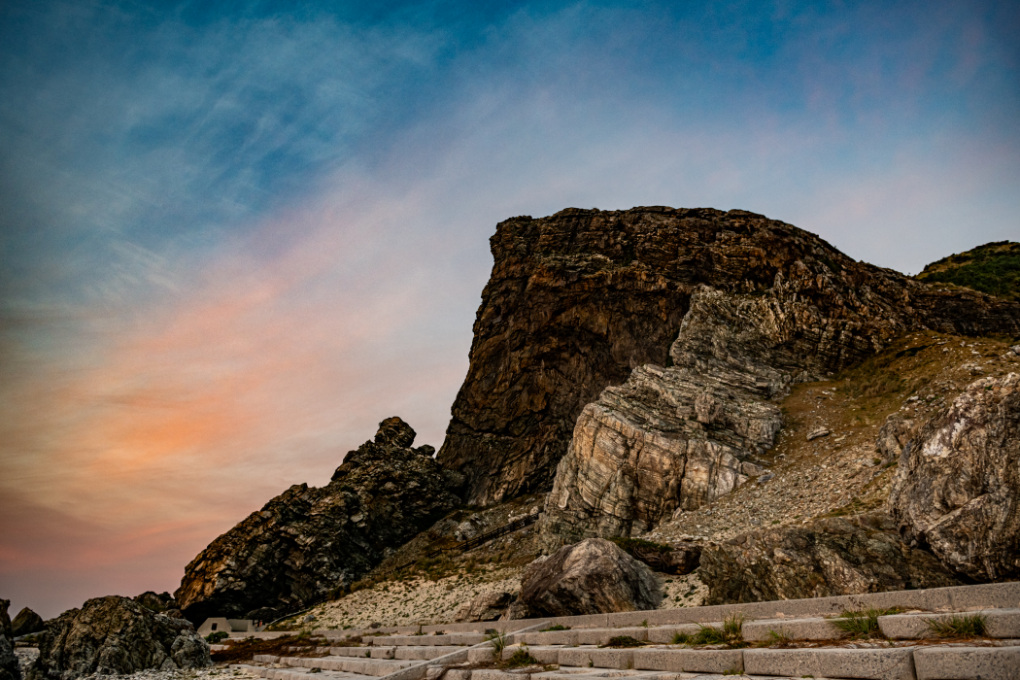Experience charming Iheya Island, located to the northwest of the main island of Okinawa, and visit its must-see spots. From Nakijin’s Unten Port in northern Okinawa, trips to Izena Island take an hour, while the journey to the island of Iheya requires approximately 80 minutes. Despite the proximity, both islands see comparatively fewer tourists, making them ideal locations for visitors longing for a relaxing day trip. Read our guide to find out more about Iheya Island’s historical, cultural and scenic spots, and learn about exciting things to do while on the island.

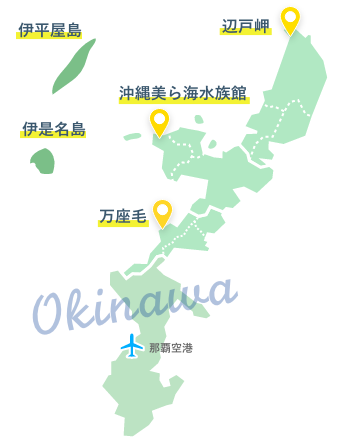
Recommended spots
Tamaudun
Sacred mausoleum dating from the era of the Ryukyu Kingdom, where members of the royal Sho family are entombed
At the foot of steep rocky hills on the southeastern side of Izena Island lies Tamaudun (mausoleum). This location was also home to Izena Castle, once touted as an impenetrable fortress. This royal mausoleum was first constructed during the reign of King Sho Shin (r. 1477-1526), who was the son of the founder of the second Sho dynasty, King Sho En. Devastation to its wooden, tiled roof structure caused the mausoleum to be relocated twice before it was rebuilt with stone at its present location in the year 1688. The mausoleum was designated as a national tangible cultural property in 2017.
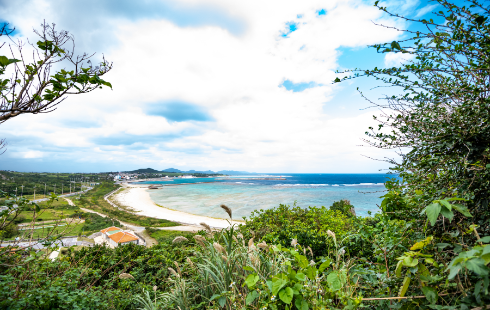
As the birthplace of King Sho En, Izena Island houses many historical sites related to the former ruler, the most representative of which is Tamaudun. The mausoleum consists of two tombs; in the left (eastern) chamber rests the family of King Sho En, while the King’s relatives are entombed in the right (western) chamber. Although the mausoleum’s interiors are not open to public, two stone zushi (constructed for the housing of remains) crafted from Chinese diabase rock are ensconced in the eastern chamber. Intricate carvings of lion and peony motifs on the front of both zushi have earned high acclaim for their level of quality. Incidentally, both King En and his son King Sho Shin are entombed in Tamaudun Royal Mausoleum near Shuri Castle, where the kings of the Second Sho Dynasty are buried.
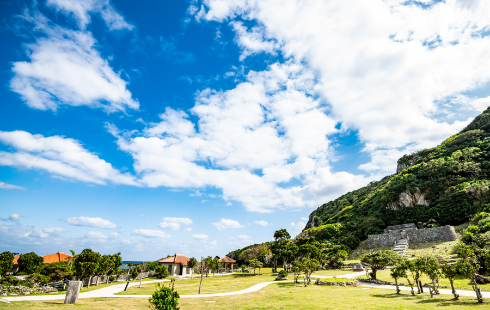
On the left of Tamaudun is a narrow path leading to the top of steep rocky hills, which requires a short climb of 15 minutes. While views on the way to the hilltop are largely obstructed by foliage, commanding vistas including a clear view of Nakada Port await at the top. When visiting Tamaudun, please park at the adjacent parking area, with a red tiled roof building serving as a landmark.
- Admission:
- Free
- Information:
- 0980-45-2435(Izena Tourism Association)
Mekaruke
Heritage house that once housed the family of royalty
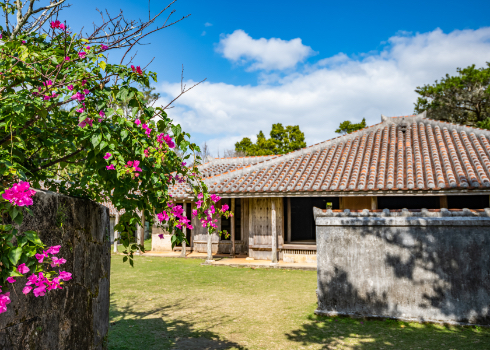
The Mekaruke, situated approximately eight minutes from Nakada Port, historically served as the living quarters for members of royalty. The uncle of King Sho En, the inaugural leader of the second line of Sho emperors of the Ryukyu Kingdom who originally hailed from Izena Island, and his descendants lived here for generations before the house was rebuilt in 1906. In 1977, the building was designated as an important national cultural asset for its extraordinary historical value. Resting on foundations of stacked Ryukyu limestone, the Mekaruke encompasses hallmarks of classic Ryukyuan architecture. Its main quarters feature a spacious reception room on the right, as well as a small shed for animal husbandry on the left, making the house a classic reference for traditional residences of members of upper royalty.
- Opening Hours:
- 9am to 5pm, open all year round
- Admission:
- Free
- Information:
- 0980-45-2318
(Izena Village Board of Education)
Iheya Island Yonezaki
Camping, BBQ and marine activities - Everything you need for endless fun in Iheya Island
On the west of Iheya Island located just ahead of the bridge bound for Noho Island is Iheya Island Yonezaki. This activity center is conveniently situated within scenic Yonezaki Seaside Park, which boasts stunning views of seas and elevated hills that surround the island. Try your hand at marine leisure that include SUP (paddleboarding), sea kayaking and snorkeling, and unwind after a day’s fun at the adjoining campsite.
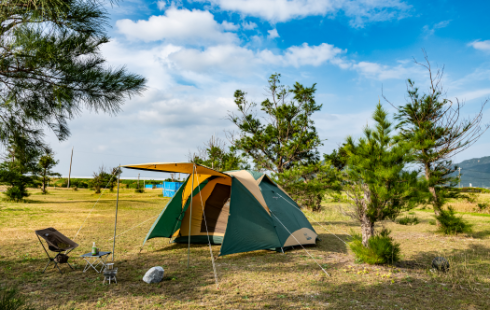
Visitors can travel light with just swimwear and a towel as the center provides rental snorkeling equipment and lifejackets. Those keen on sunrise and sunset SUP may make advance reservations for guided tours. Campgrounds provide rental services for basic camp gear such as tents, lamps, sleeping bags and outdoor tables and chairs, although guests are also welcome to bring their own equipment. Meal preparation stations, toilets, hot water showers and vending machines are readily available, but visitors are advised to buy food and edible items on the main island of Okinawa before heading to Iheya.
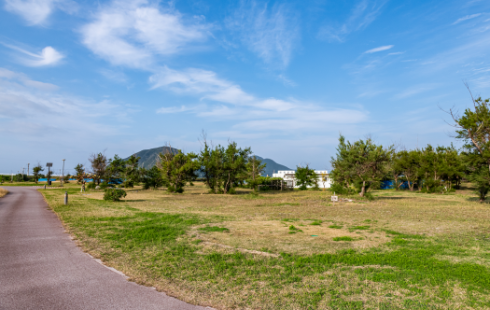
Bicycles for a leisurely tour on wheels around the island are provided at 1000 yen a day.
- Opening Hours:
- 8:30am to 5:30pm, open all year round
http://www.iheya-island-yonezaki.net/
- Information:
- 0980-46-2570
Kumaya Cave
Japan’s southernmost amano-iwato (heavenly rock cave) derived from ancient mythology
Sitting on the northern edge of Iheya Island just before Mount Kuba is Kumaya Cave, a quartzite rock cavern caused by protracted erosion from the elements of nature. It is thought that majestic boulders of ancient layers of landform gradually gave way to erosion from seawater, wind and sand to form Kumaya Cave. The entrance to the cavern is narrow, allowing just enough space for one person to pass through. Once inside however, the grotto is surprisingly large, extending to a space measuring over 600 square meters across and 10 meters high.
At dawn, the sun rising above the horizon casts morning rays over Kumaya Cave’s craggy exteriors, creating an altogether breathtaking sight.
Due to limited light entry, the appearance of cave interiors change quickly depending on the season and time of day. On clear mornings, the sun bears down upon the cave like spotlights through crevices at the top, making the cavern feel almost mystical.
Visitors are advised to bring torchlights, although most belongings should be left behind when entering the narrow entrance, and exercise caution when walking inside the cave.
In ancient Japanese mythology, the Amano-Iwato legend has that the Goddess of the Sun, Amaterasu, who could no longer bear the foolish behavior of her brother Susano’o, the God of Storms, went away in anger to hide in a cave, depriving the world of light. Numerous locations across Japan have been associated with this legend, and Kumaya Cave is the southernmost of these places.
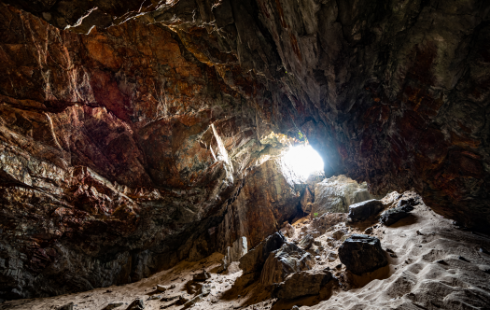
Approximately 200 years ago, the prominent Teikan Fujii, a scholar of classic Japanese thought and culture, was first in declaring that the birth of Japan’s Emperor took place on the island of Iheya. In 1968, a ceremonial ritual was held in reenactment of amano iwato-biraki (“the opening of amano iwato”), paving the way for Kumaya Cave to be partially open to public and prompting numerous visitors to seek prayers at the cave.
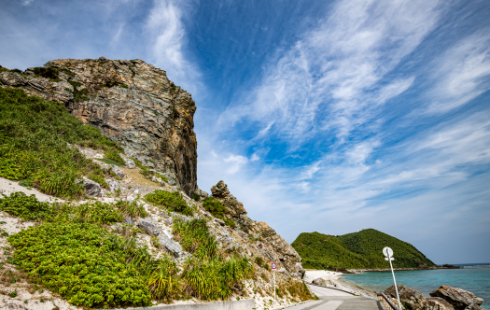
In 2017, the Iheya Amano Iwato shrine was constructed at a location 3 km away, and a ritual was conducted to move the resting place of Goddess Amaterasu from Kumaya Cave to the shrine.
http://www.iheyazima-kankou.jp/
- Information:
- 0980-46-2526
(Iheya Island Tourism Association)
